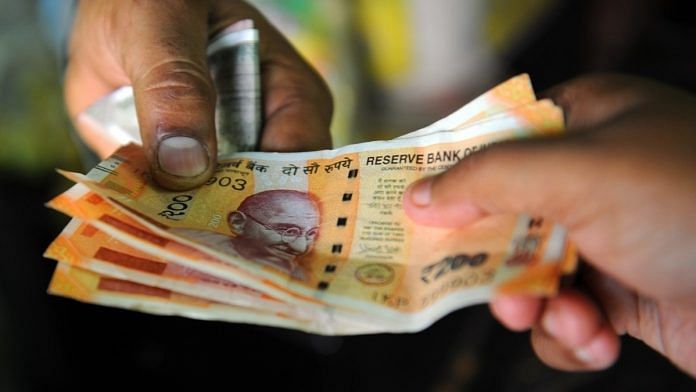New Delhi: There was a sharp rise in the detection of fake notes of Rs 200 and Rs 500 denominations in 2019-20, despite the security features in them.
Data from the Reserve Bank of India’s annual report released Tuesday also showed that the circulation of Rs 2,000 notes — the highest value denomination notes — has been falling sharply in the last two years with the central bank not printing any new Rs 2,000 notes in 2019-20.
In November 2016, the Narendra Modi government had cancelled the existing Rs 500 and Rs 1,000 notes as legal tender. After the demonetisation decision, the government had introduced notes of Rs 2,000 and new series of Rs 500 notes, as well as Rs 200 notes. One of the reasons cited for the government’s momentous decision was ostensibly to check fake notes.
However, data from the new report showed that counterfeiting of currency notes remains a problem for India.
In 2019-20, as many as 30,054 fake notes of new Rs 500 series were discovered in the banking system, as against 21,865 in 2018-19 — an increase of 37 per cent.
Similarly, there was a 151 per cent rise in the detection of fake Rs 200 notes. Data shows that banks and RBI together detected 31,969 fake Rs 200 notes in 2019-20, as against 12,728 in 2018-19.
The number of fake Rs 2,000 notes detected fell 22 per cent to 17,020 in 2019-20, from 21,847 in the year ago period.
This data only reflects detection of fake notes by banks and RBI, and not those counterfeit notes seized by the police and other enforcement agencies.
Also read: Covid impact has ‘severely diminished’ space for govt to support demand, says RBI report
Sharp fall in circulation of Rs 2,000 notes
The RBI data also shows that the share of Rs 2,000 notes in overall currency circulation has come down by 15 percentage points in the last two years in value terms, in a sign that policy makers are looking to gradually increase the use of notes of lower denominations like Rs 500, Rs 200 and Rs 100.
In 2019-20, in terms of value, the share of Rs 2,000 notes in total currency in circulation was around 23 per cent, as against 31 per cent in 2018-19 and 37 per cent in 2017-18.
Last year, India decided to stop printing Rs 2,000 notes and gradually reduce its circulation. Typically, high value denomination notes are used for hoarding, money laundering and tax evasion prompting efforts to encourage use of lower value denominations.
Also read: After Ambani, it’s Adani who’s beginning to carve up India’s post-Covid business monopoly






